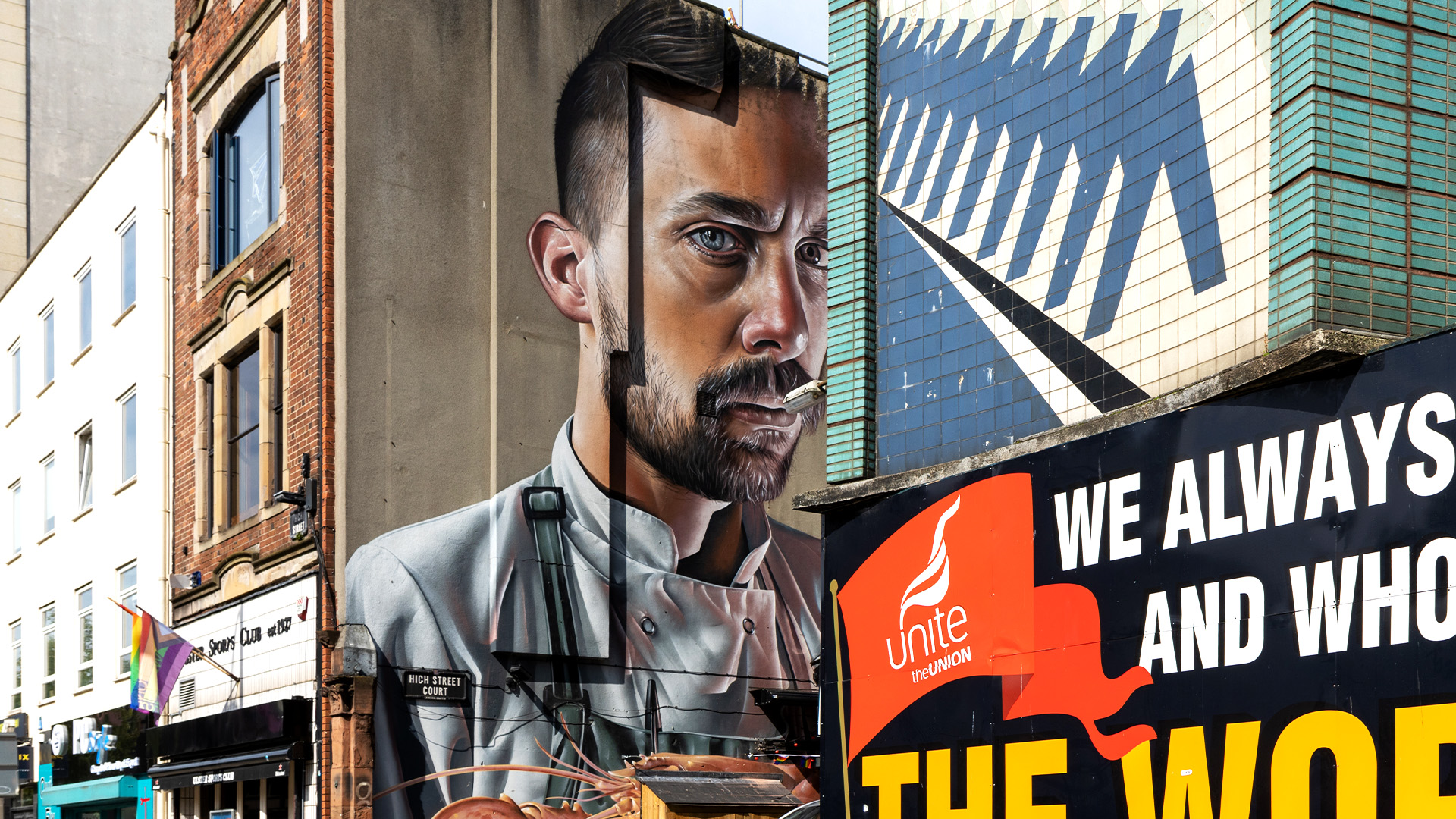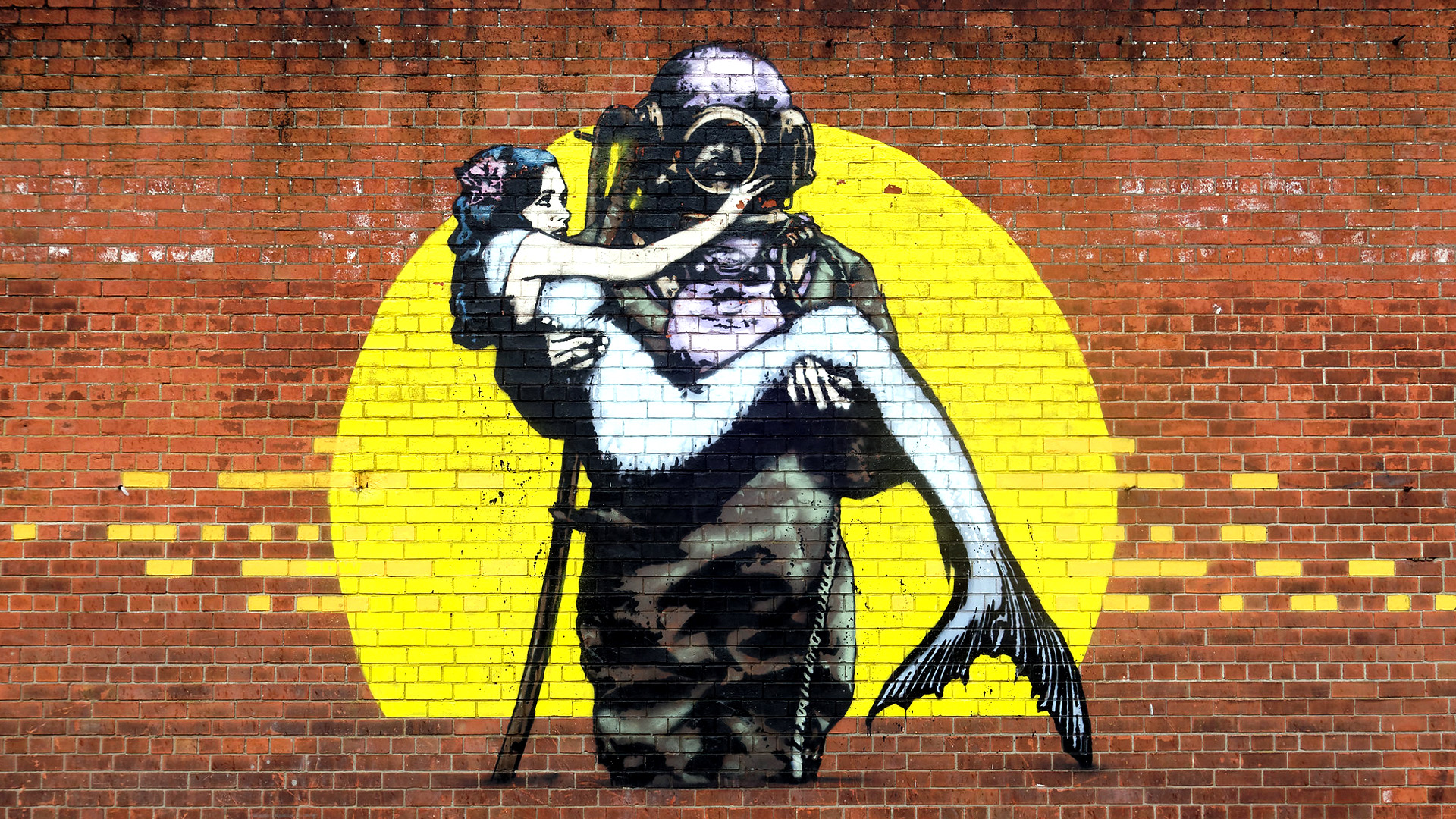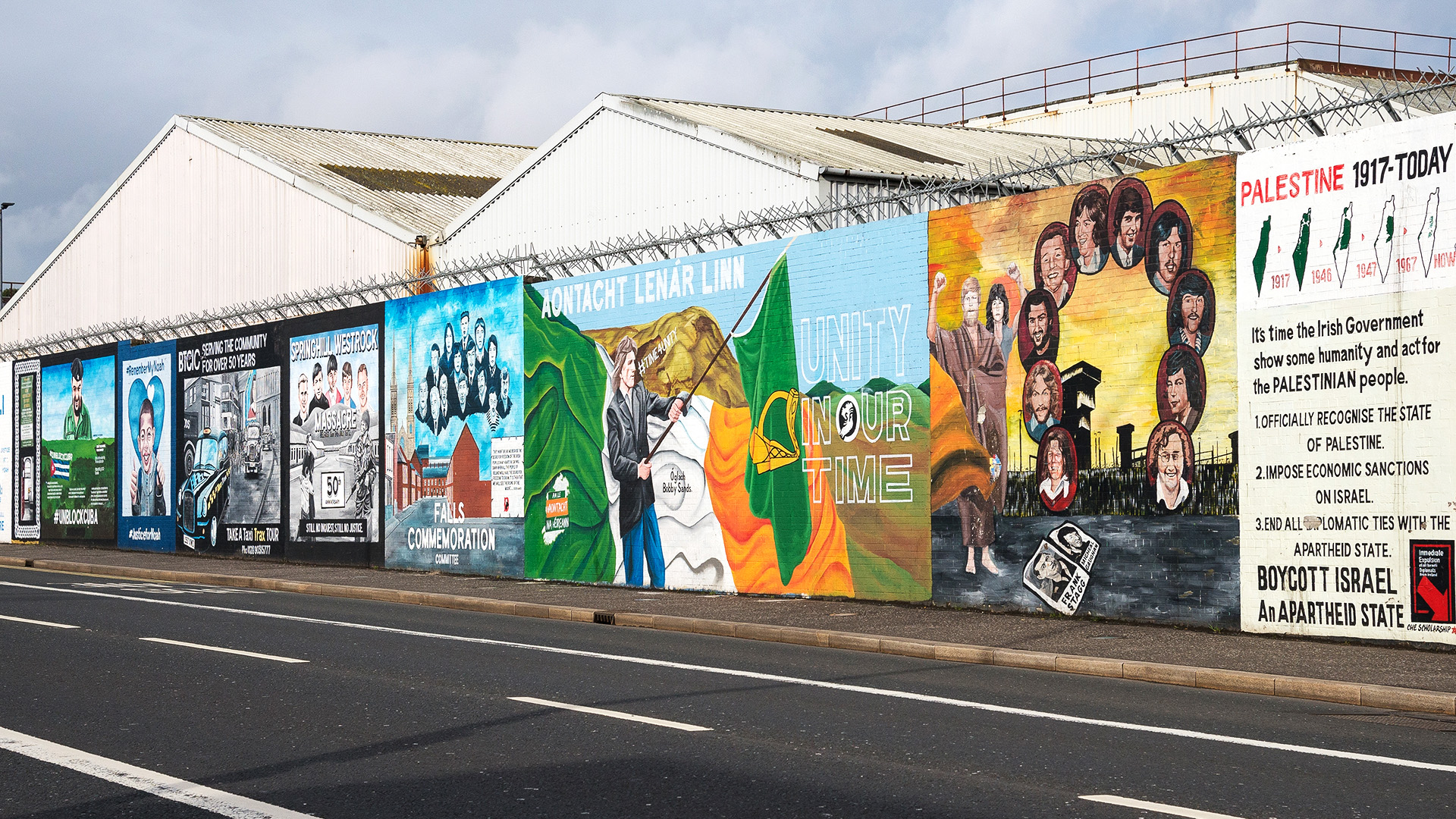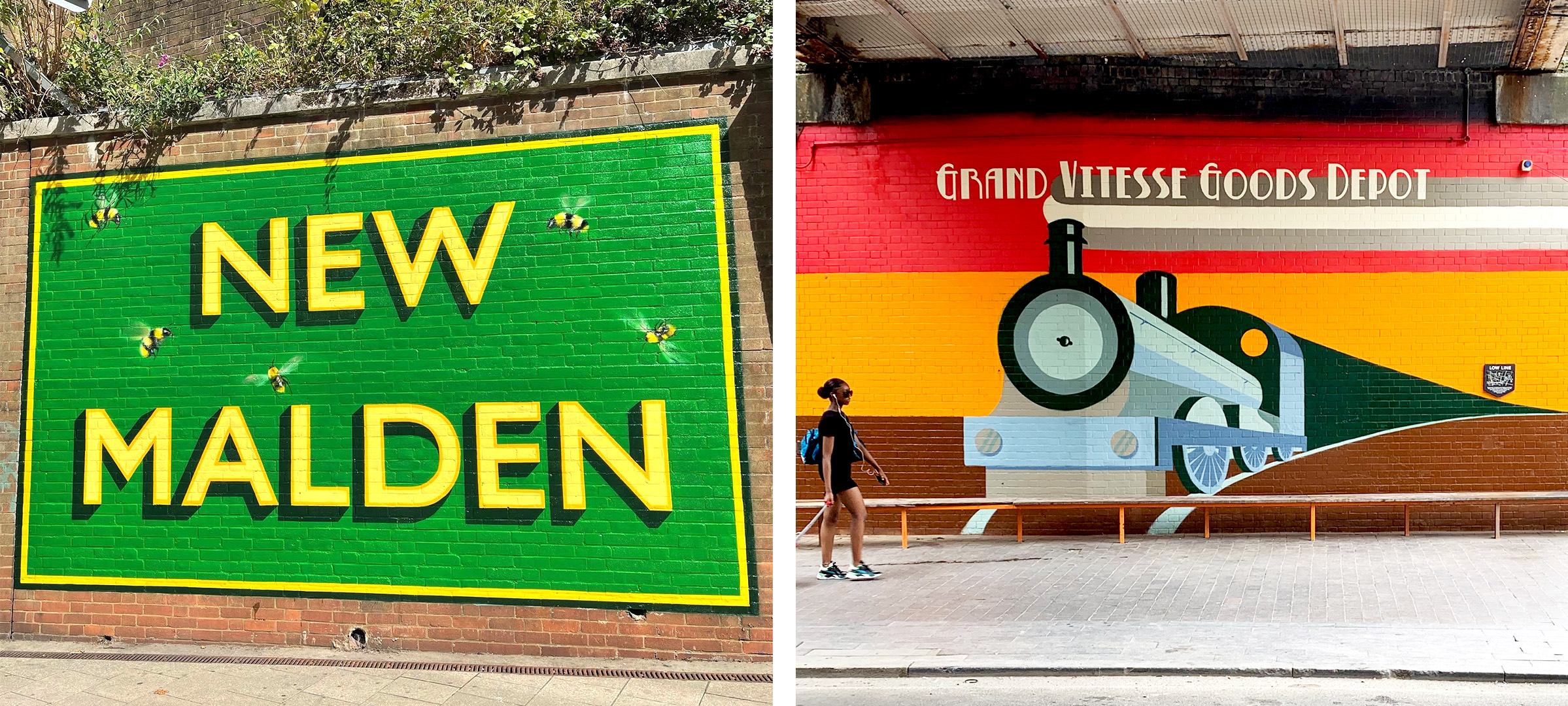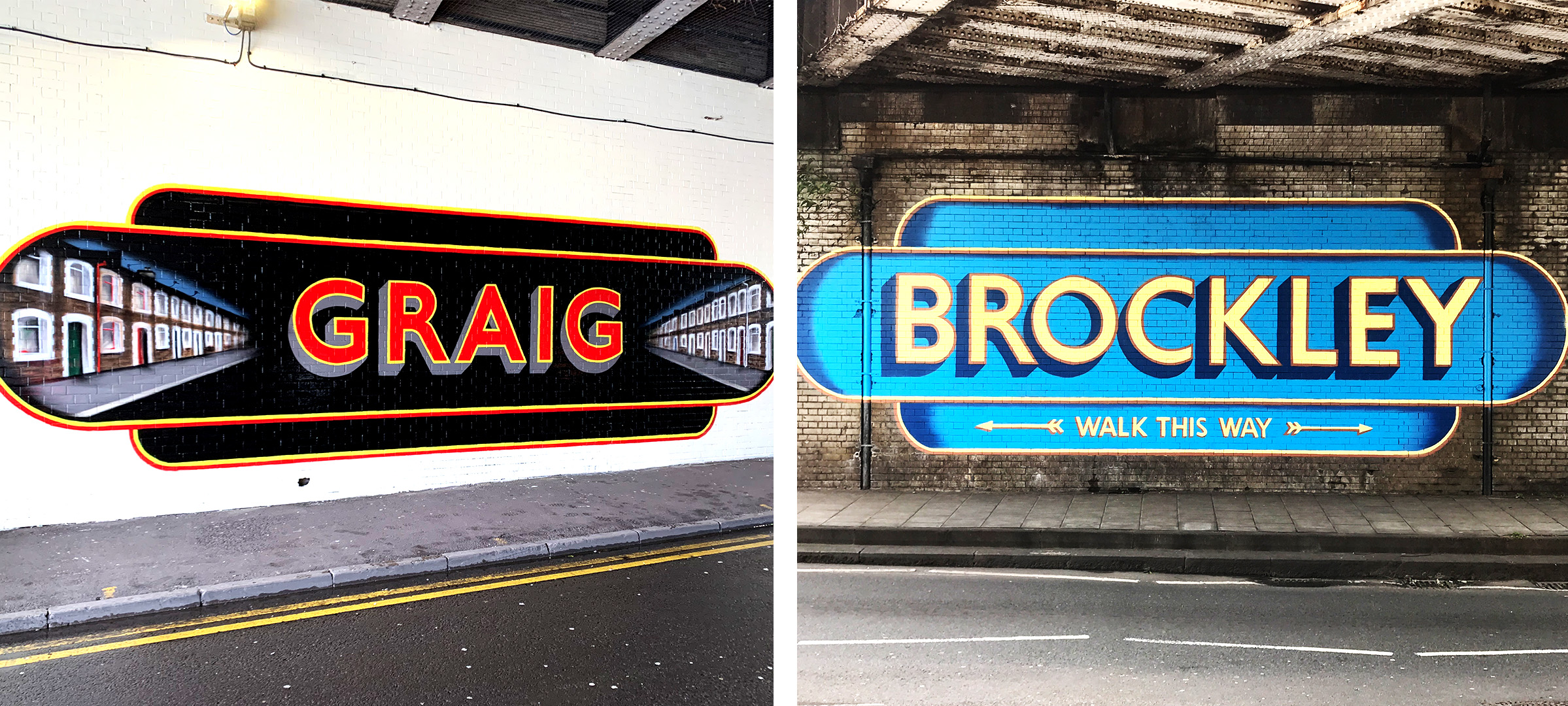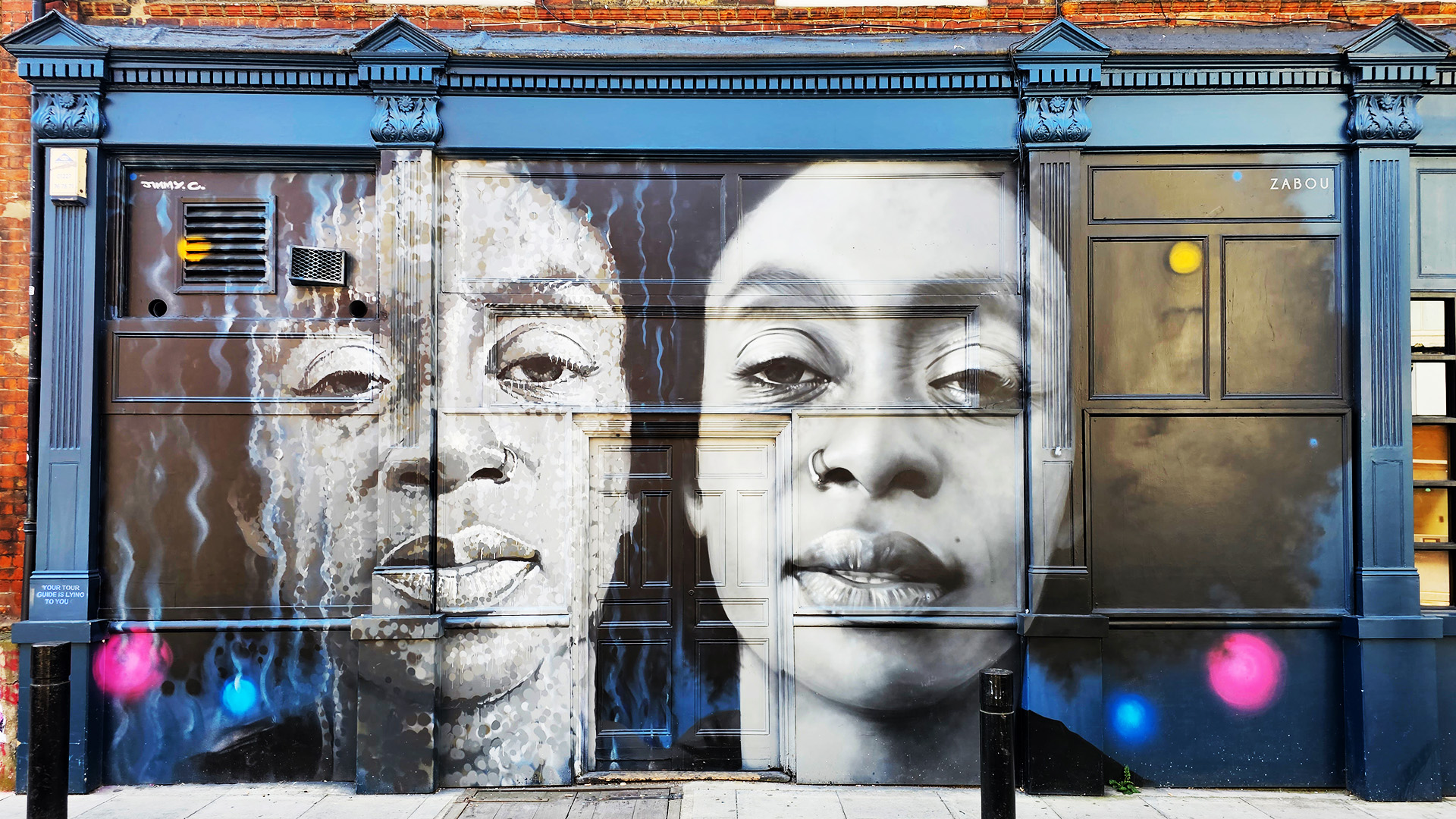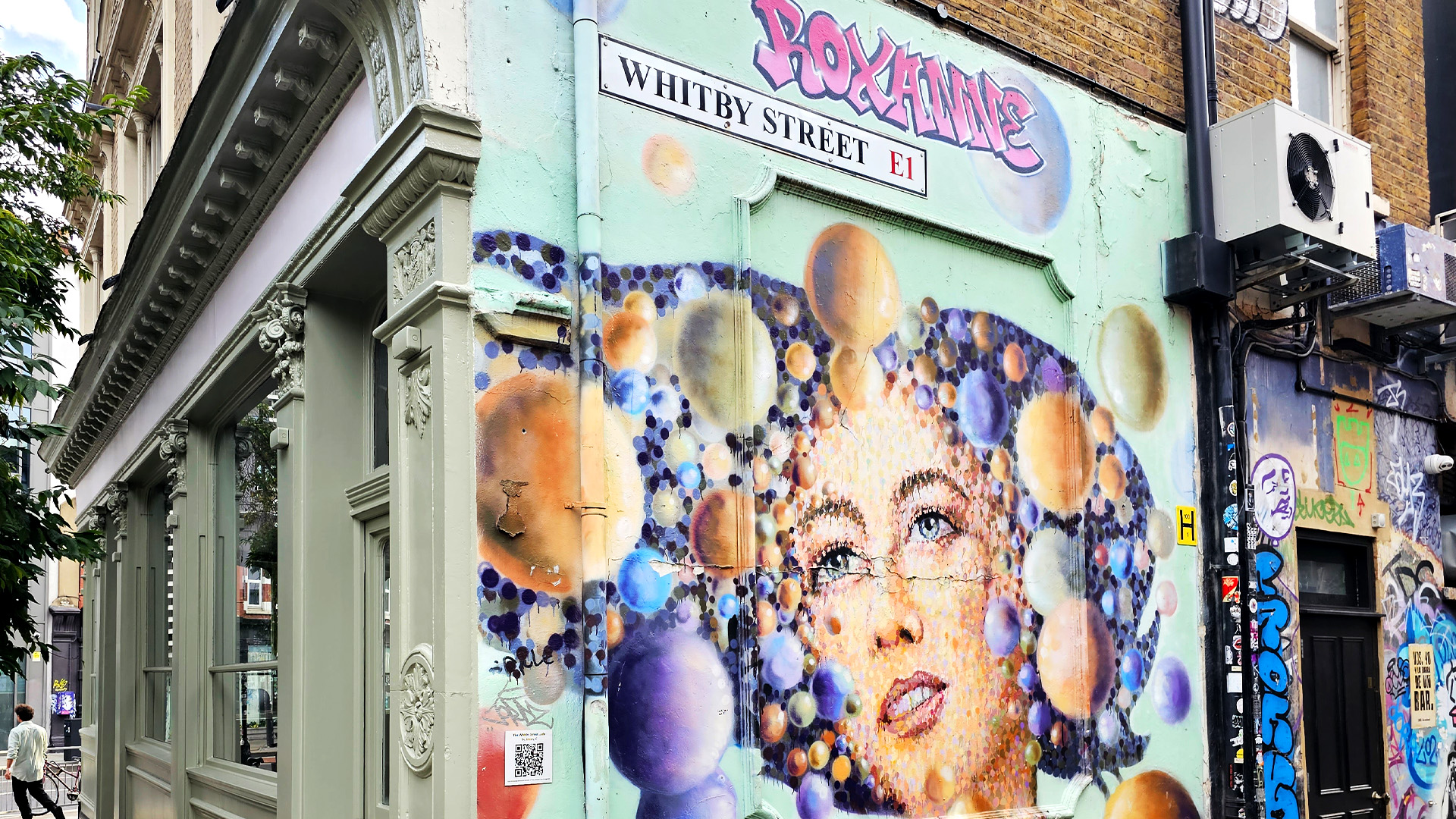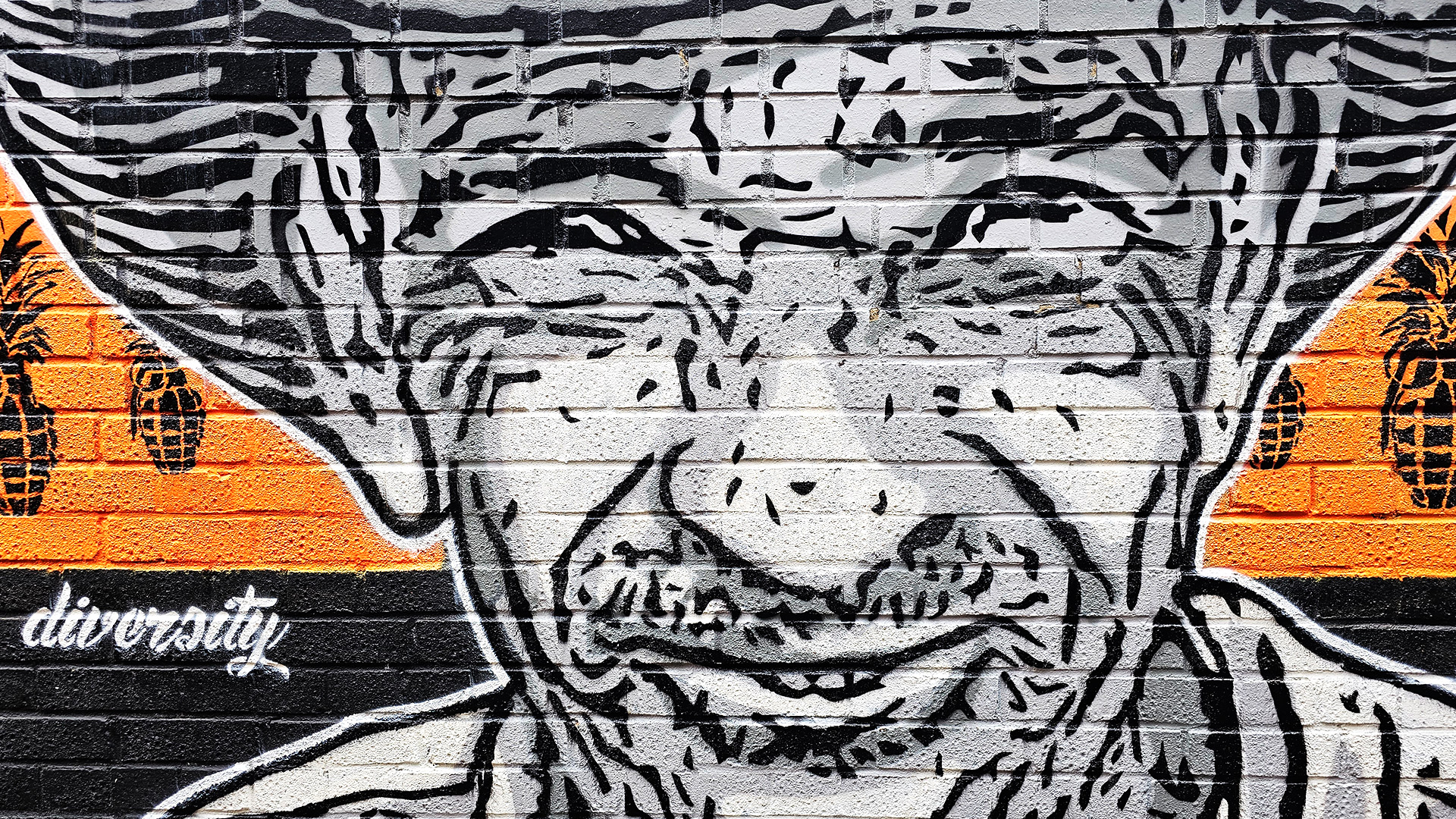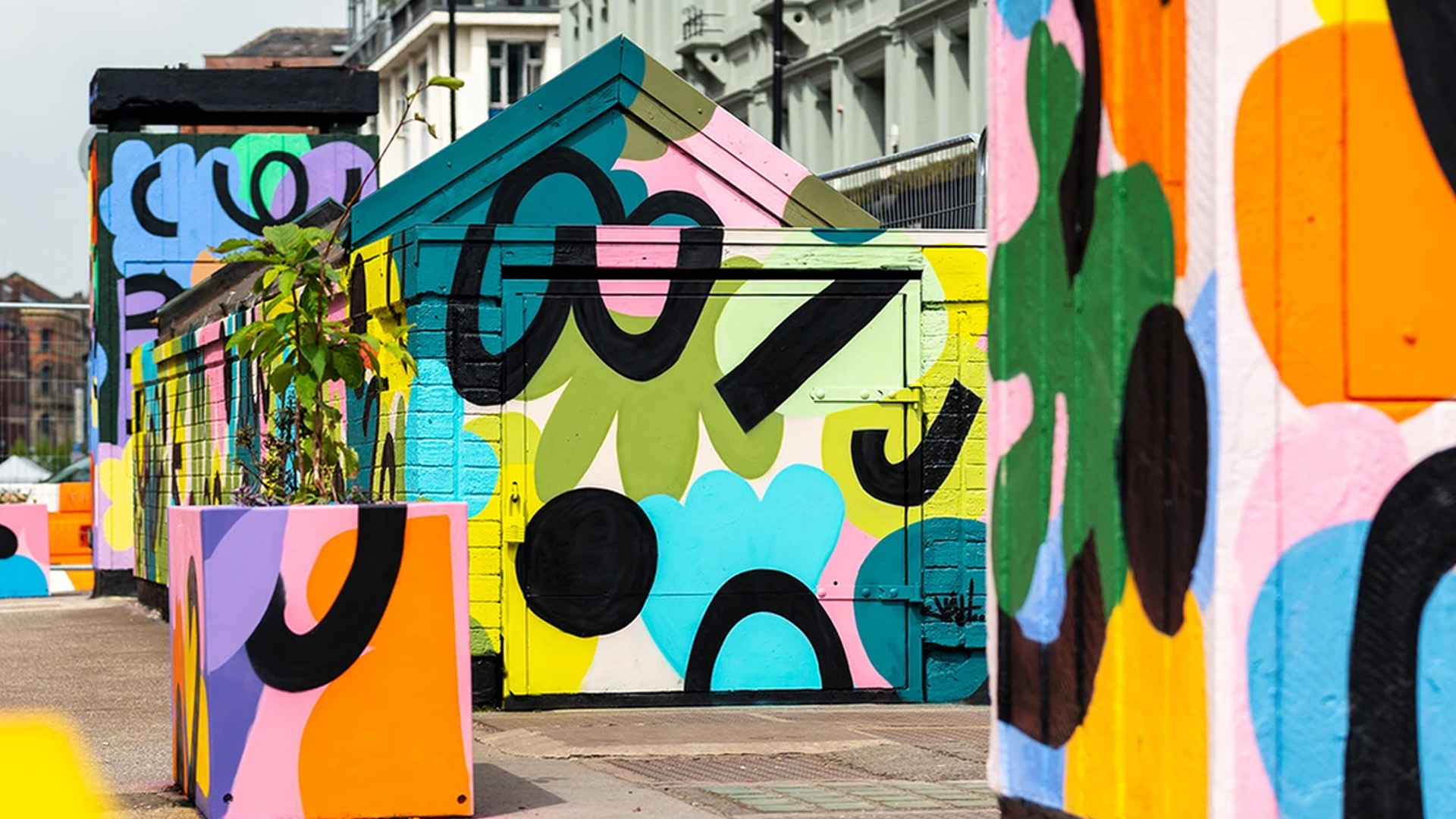
Street art in Walthamstow, London
If you were asked to think of reasons why people visit the UK, viewing street art probably wouldn’t make the top 10. Yet its popularity in urban areas continues to grow, both as a form of artistic expression and a way to create a stronger sense of community – livening up walls, streets or entire neighbourhoods.
Earlier this year, it was announced that more than 5,000 examples of street art across the UK will be digitally captured as part of a project led by the charity Art UK. With funding from the National Lottery Heritage Fund, a free public database created by volunteer researchers and photographers will record them for future generations.
Just a few decades ago when street art was seen as subversive and was often carried out illegally, an officially sanctioned project like this would have been very unlikely – and National Lottery funding less so.
The project will cover a huge range of public art, from modern Banksy works to the murals of Belfast, many of which are a symbol of the ‘Troubles’, a violent era of Northern Ireland’s history.
Belfast hasn’t shied away from the role public murals played in its recent past. These days, the capital of Northern Ireland is acknowledging the creativity and community spirit that can be fostered by public art – commissioning a range of new artworks to adorn its walls.
“Looking back, I always thought murals in Belfast were a way of messaging whose territory you were in, either a loyalist or republican neighbourhood,” says Diana Fitzsimons FRICS, Belfast Harbour’s commissioner and visiting professor at Ulster University. “Some of the murals of the Troubles era were harsh, intimidating and violent in content, borne out of protest.
“Today the content of murals and street art generally is softer and more welcoming, seeking to emphasise and encourage shared spaces for people of all backgrounds in the city. A lot of street art is commissioned by either the Belfast City Council, the Department for Communities or the Belfast Business Improvement Districts (BIDs) - Cathedral Quarter and Linen Quarter.”
Take for example, the playful mural of Terri Hooley, a punk icon in Belfast who founded the Good Vibrations record shop and label. It is part of a £500,000 scheme called Great Expectations, that aims to revive Great Victoria Street and bring more footfall to the area and its businesses.
Public art like this is now a tool to convince people to come to a particular area of the city rather than make visitors immediately aware of its political or religious views. The regeneration of Belfast is ongoing – one of its most notable new developments is popular visitor attraction Titanic Belfast, that opened in the harbour in 2012.
“Belfast now hosts many conferences and is a cruise destination with about 170 cruise ships stopping over each year,” says Fitzsimons. “Nearly everyone who is a visitor wants to see the famous Peace Walls in inner city Belfast. There are organised cycling tours and guided bus tours. Visitors are shocked by the divided history of Belfast’s inner city, but impressed by the changes they see and the attempts being made to break down sectarian barriers.”
Back in fashion
If you walk around the older areas of some cities and look up, you can often spot old painted adverts on the exposed sides of buildings. They’re also known as ‘ghost signs’, for long-forgotten brands or products that disappeared years ago. That was public art of a kind, albeit commissioned as an advert. For whatever reason (perhaps it was seen as old-fashioned), that kind of painted signage fell out of favour.
But like most things that go out of fashion, it eventually came back in again, which is to the benefit of people like London-based street artist and signwriter Lionel Stanhope. His painted signs for train stations, which have a traditional feel to them, have appeared all over south London.
The first couple he painted were in response to community-led projects, with local residents asking permission from Network Rail for permission to have the sign painted there. Then Network Rail saw the benefit of the signs and asked Stanhope if he could do more on their stations, to help brighten up walls or foot-tunnels. They quickly become a popular sight at train stations across the capital and as far away as Pontypridd in Wales.
Stanhope says that while they were well-received by the time he’d finished, the instances where Network Rail engaged with the community first were smoother projects to work on. It gave residents less cause for concern when they saw a man they didn’t know spray painting on a wall beside their train station. “I like to work in aerosol, which is a red flag to a lot of people,” he says.
“They [Network Rail] would run Facebook groups and other community initiatives before painting began. I would do different colour mock-ups so the community could choose the colours of the mural. By the time work started they knew it was going to happen and were more excited about it.”
The popularity and financial opportunity of commissioned street art has inevitably led to the creation of agencies that manage both the wall spaces for art and the artists themselves. This business side of street art is not always loved by the purists though, says Stanhope. “There will always be those hardcore graffiti artists who don’t like it going mainstream, but street art is not graffiti – it’s mostly legal stuff. And at the end of the day, there are bills to be paid so you’d be silly to shun a commission because of that point of view.”
An outdoor art gallery for everyone
Ben Mackie is a party wall surveyor whose interest in street art began when he was out and about doing his work. “As a surveyor, I get to travel around London inspecting properties. At first, I just walked past street art, but every now and then it would just make me go ‘wow’. After a while that I decided that when I had an appointment in a certain area, I would seek the artwork out.
He’s seen the positive effect it has on neighbourhoods, adding splashes of colour and intrigue to walls that would otherwise not get a second glance from passers-by. Now he’s working on a book about street art that he plans to donate to the charity Shelter.
“I love the fact that it's an outdoor gallery,” he says. “There's fresh air and you have to walk a little bit and you don't always know what you're going to see or what condition it’s going to be in. And you see more than just the artwork, you're seeing it in the context of its surroundings.”
It’s a democratisation of art, who can be an artist and who gets to have art in their neighbourhood. Mackie highlights Walthamstow in London as a particular hotspot for street art and says a lot of that is down to Wood Street Walls, an arts organisation that encourages street art locally. It aims to make art accessible for all as well as increase the number of workspaces available to artists.
“Areas without street art almost feel a bit empty,” says Mackie. “I think Walthamstow has a good community feel, lots of lovely artwork and people feel better about their area and appreciate it more when there is street art. For me, street art goes hand in hand with the creativity of the local community.”
However, as with anything that goes up in public and is accessible to everyone, there is the question of protecting it from unwanted tagging or ‘bombing’ (where multiple surfaces in an area are covered with symbols or large tags). For street artist Stanhope, that’s part of the overall package of street art. “There’s always the tagging and bombing and messy stuff but you have to have that to get the good bits too – it’s a tricky one,” he says.
Mackie cites the London Mural Festival – an annual event celebrating street art – as another example of the popularity of the medium. Belfast also hosts well-attended street art events of its own, which Fitzsimons says bring people together: “International artists come from far and wide to take part in street art festivals and events that are focused on semi-derelict city-centre areas still awaiting long promised regeneration,” she says. “Organisations such as Seedhead Arts want to celebrate a new era in the complex life of our city where the street art speaks to the youth of today about diversity, quirkiness, laughter, defiance and anger but not in a sectarian way.”
Street art is simply more accessible to large numbers of people than an artwork hanging in a gallery. Many galleries have entry fees, and the artworks often have a plaque next to them explaining the artist’s intention, using complicated terms that can make the reader feel out of their depth.
There are the obvious drawbacks of being painted on an exterior wall, such as the weather or vandalism, but as Mackie points out: “That's the nature of street art, it's vulnerable, but it’s also free to the public, which is amazing.”


